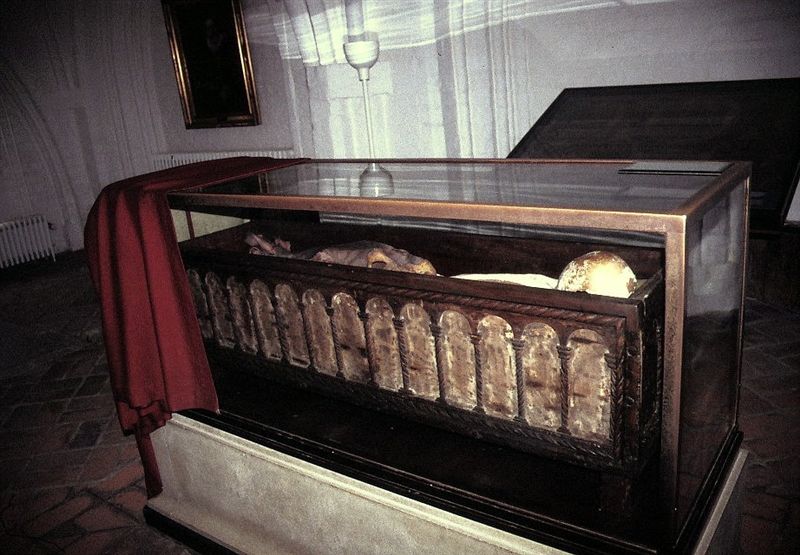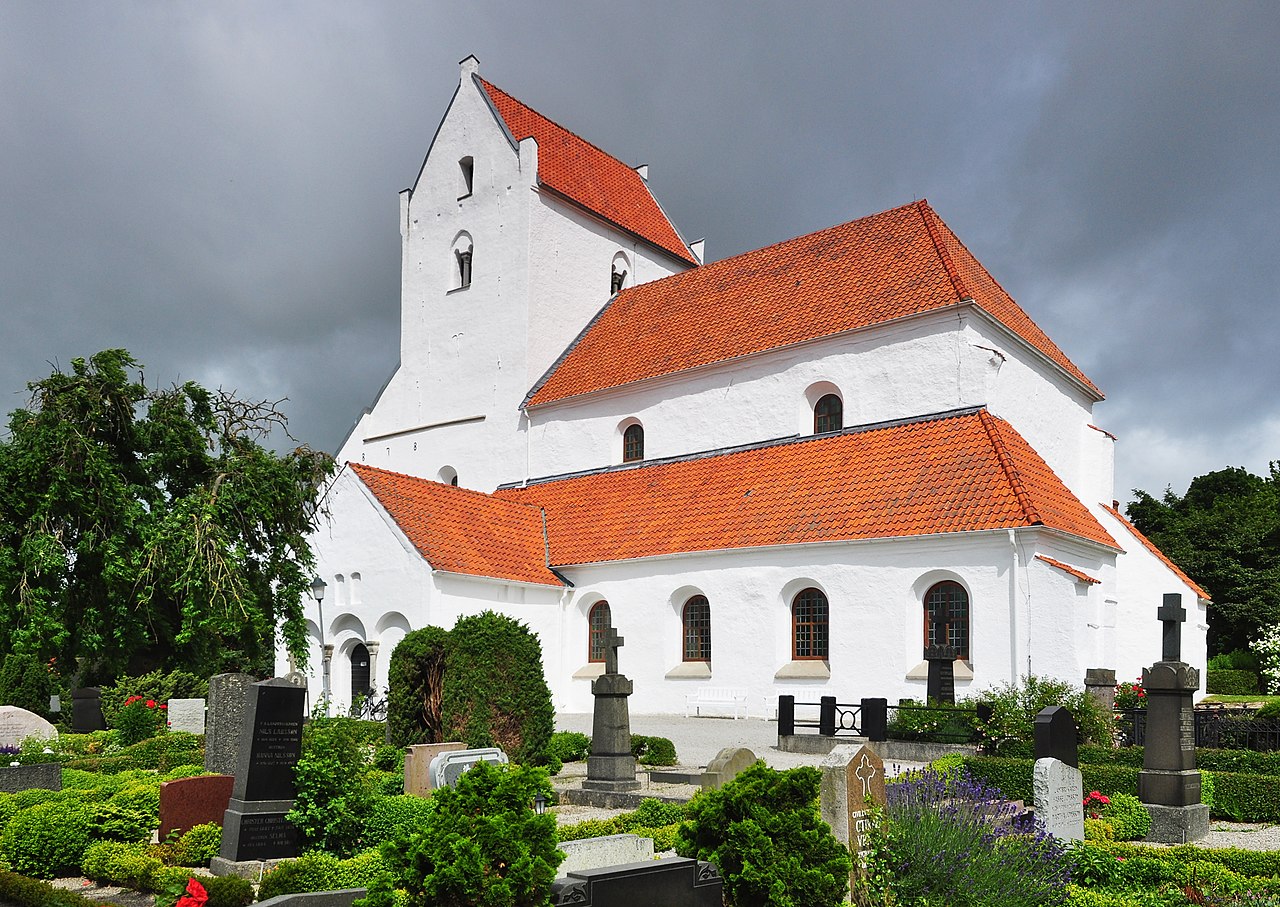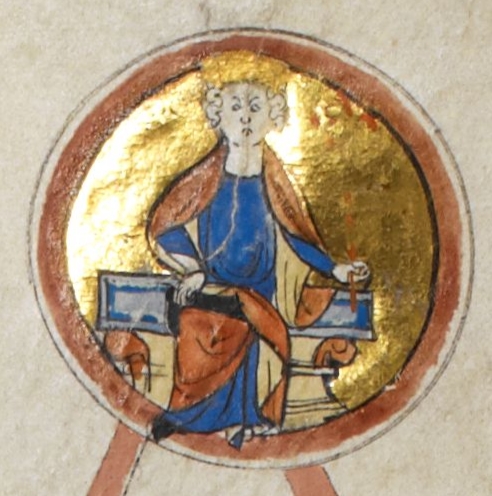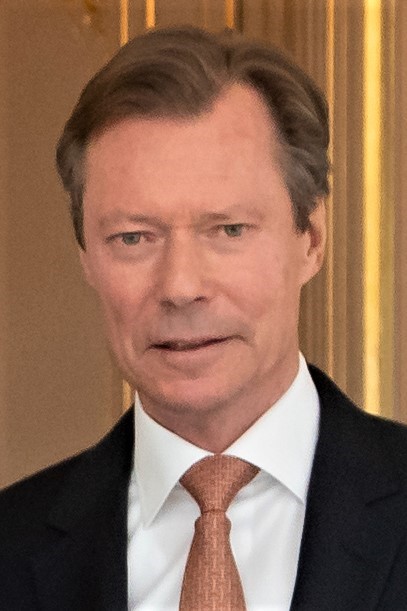by Susan Flantzer
© Unofficial Royalty 2025
The reigning family of the Principality of Monaco, the House of Grimaldi, descends from Otto Canella, a 12th-century Genoese statesman, and takes its name from his son Grimaldo Canella. Grimaldo had a son, Oberto, known as “Oberto, son of Grimaldo” or “Oberto Grimaldi,” making him the first of the family to use the surname of Grimaldi. The Grimaldi family has ruled Monaco for eight centuries, making it Europe’s longest-ruling royal family.
In 1297, François Grimaldi, dressed as a Franciscan monk, seized the Rock of Monaco. His cousin Rainier I, Lord of Cagnes, was the first Grimaldi ruler of the area now known as Monaco. However, Genoa, Milan, and France occupied the area for several periods. The first rulers were Lords of Monaco. From 1612 onward, the rulers were sovereign Princes. Monaco has had one sovereign Princess, Louise Hippolyte, who reigned for ten months in 1731 before she died from smallpox.
The Style His Serene Highness and Her Serene Highness
Monaco is a principality. A principality is a sovereign state ruled by a regnant monarch with the title of Prince or Princess. The sovereign of Monaco (the reigning Prince or Princess of Monaco) and the other Princes and Princesses of Monaco are all styled His Serene Highness and Her Serene Highness. This is the usual style for a Princely Family of a Principality. The same practice is used in the Principality of Liechtenstein, except Liechtenstein’s succession does not allow for a female Sovereign Princess.
The Monarch of Monaco

Prince Albert II of Monaco; Credit – By Belgian Presidency of the Council of the EU 2024 from Belgium – 24_03_07_BLUE_LEADERS_ByPixelshake-344, CC BY 2.0, https://commons.wikimedia.org/w/index.php?curid=146336017
His Serene Highness Prince Albert II is the current reigning Prince of Monaco. His father Prince Rainier III died on April 6, 2005, and Albert became the reigning Prince of Monaco. Monaco had one reigning Princess, Louise-Hippolyte, who reigned for ten months in 1731 before she died from smallpox.
In 1612, Honoré II, Lord of Monaco started using the title of Prince of Monaco, becoming the first Prince of Monaco. Monaco was recognized as a sovereign principality by King Felipe IV of Spain in 1633 and by King Louis XIII of France in the 1641 Treaty of Péronne. Under the Treaty of Péronne, the Principality of Monaco became a French protectorate and the Spanish troops in Monaco were finally removed. The Princes of Monaco became vassals of the Kings of France while remaining sovereign princes.
Because of the treaty with France, Honoré II lost his Spanish lands and their income. To make up for the loss, King Louis XIII gave Honoré II the Duchy of Valentinois, the Marquisate of Baux, the County of Carladès, the City of Chabeuil, the Baronies of Calvinet, Buis, and the Lordship of Saint-Rémy-de-Provence. Although the lands connected to these titles eventually reverted to France, some of these titles have been bestowed upon members of the Princely Family of Monaco over the years.
The Consort of Monaco
The wives of the reigning Prince of Monaco have been styled Her Serene Highness Princess <name> of Monaco. The current consort of Monaco is Her Serene Highness Princess Charlene, born Charlene Lynette Wittstock in Bulawayo, Rhodesia, the former name of the country of Zimbabwe.
So far, there has only been one male consort of Monaco, the husband of Louise-Hippolyte, Princess of Monaco, Jacques François Goyon, Count de Matignon. The greatest concern of Louise-Hippolyte’s father, Antonio I, Prince of Monaco (reigned 1701 – 1731), was the future of the House of Grimaldi. Because Antonio’s only legitimate children were all daughters, the heir to the throne was his only brother François Honoré Grimaldi, a Catholic priest with the title Monsieur l’Abbé de Monaco, later Archbishop of Besançon. In 1715, François Honoré renounced his claim to the throne of Monaco, and Antonio’s elder surviving daughter Louise-Hippolyte became his heir. Antonio decided, with the permission of King Louis XIV of France, that Louise-Hippolyte’s husband would take the surname Grimaldi and jointly rule Monaco with her.
In 1689, Louise-Hippolyte married Jacques François Goyon, Count de Matignon, from a wealthy French noble family, and the couple resided in Paris, France. Jacques was given the style and title His Serene Highness Prince Jacques of Monaco. In 1731, Louise-Hippolyte’s father Antonio I, Prince of Monaco died, and she was now the reigning Princess of Monaco, and Jacques was to co-reign.
However, Louise-Hippolyte traveled alone from Paris to Monaco, and the people of Monaco received her enthusiastically. Louise-Hippolyte immediately took the loyalty oath, but her husband Jacques was not mentioned. Louise-Hippolyte decreed that she would be the sole ruler, all documents would be issued in her name only, and her husband and children would stay in France. Louise-Hippolyte had a very short reign of ten months. She died from smallpox at the age of 34, on December 29, 1731.
Upon Louise-Hippolyte’s death, her husband Jacques became the legal guardian of their eldest son, Prince Honoré III, and returned to Monaco with a plan. Jacques should rule as Prince of Monaco until Honoré reached his twenty-fifth birthday. However, Jacques I, Prince of Monaco neglected the affairs of state and, under pressure, was forced to leave Monaco. In May 1732. Jacques officially abdicated in favor of his son Honoré III on November 7, 1733.
The Heir to the Throne of Monaco – Hereditary Prince of Monaco
Hereditary Prince Jacques of Monaco with his twin sister Princess Gabriella of Monaco
His Serene Highness Hereditary Prince Jacques of Monaco, Marquis of Baux is the current heir to the throne. He is the only (legitimate) son of Prince Albert II and has a twin sister Her Serene Highness Princess Gabriella of Monaco, Countess of Carladès, who was born first.
The line of succession to the throne of Monaco is male-preference primogeniture, where males take precedence over females and older children take precedence over younger ones. Illegitimate children have no succession rights, however, if their parents marry, they would be legitimized. If there is no heir, the Crown Council selects a new reigning prince from the more distant members of the family who are citizens of Monaco
Members of the Princely Family must have the sovereign’s consent to marry. Those who marry without consent lose succession rights for themselves and their descendants. If a family member marries without the sovereign’s consent, and no children are born, and the marriage is dissolved, then that person will regain succession rights.
Currently, the title of Hereditary Prince of Monaco is regulated by the second paragraph of Article 2 of the Ordinance of May 15, 1882, revised by order on May 29, 2002, which says “heir of the reigning prince who is closest in the order of succession resulting from the said provisions is hereditary prince”. For a woman to be the Hereditary Princess of Monaco, the sovereign of Monaco must issue a Sovereign Order. The eldest child of Prince Rainier III, Princess Caroline, who descended from the reigning sovereign prince and was first in the order of succession from her birth on January 23, 1957, until the birth of her brother, the future Prince Albert II, on March 14, 1958, was never titled Hereditary Princess, but was titled Princess of Monaco.
There has been only one Hereditary Princess of Monaco, Princess Charlotte of Monaco, Duchess of Valentinois. She started life as Charlotte Louise Juliette Louvet, the illegitimate daughter of the future Prince Louis II of Monaco and Marie Juliette Louvet. Because Louis was unmarried and without an heir, the Monegasque throne was likely to pass to his first cousin once removed, Wilhelm, Duke of Urach, a German nobleman, the son of his father’s aunt Princess Florestine of Monaco.
To avoid this, Louis’ father, Prince Albert I had a law passed recognizing Charlotte as Louis’ heir and a member of the princely family. However, this law was later ruled invalid under earlier statutes. In October 1918, another law was passed allowing for the adoption of an heir with succession rights. On May 16, 1919, Prince Louis II legally adopted Charlotte. Prince Albert I gave Charlotte the Grimaldi surname and named her Her Serene Princess Charlotte of Monaco and Duchess of Valentinois. Upon Prince Louis II’s accession in 1922, Charlotte became the Hereditary Princess of Monaco. However, Charlotte knew that because of the circumstances of her birth, the very Catholic Monaco would never fully accept her as the reigning Princess of Monaco. In 1944, Charlotte renounced her succession rights to the Monegasque throne in favor of her son Rainier. Five years later, Charlotte’s father died and her son became Rainier III, the reigning Prince of Monaco.
Prince and Princess of Monaco
Princess Stephanie of Monaco, the younger of the two daughters of Prince Rainier III
The children of the Sovereign of Monaco are styled and titled His/Her Serene Highness Prince/Princess <name> of Monaco. We are surmising that children of the Hereditary Prince of Monaco and other male-line grandchildren, the children of sons of the sovereign of Monaco, are also styled His/Her Serene Highness Prince/Princess <name> of Monaco. However, it has been quite a while since that situation existed. Going back to Prince Joseph of Monaco, the second son of Honoré III, Prince of Monaco, Joseph’s three daughters were princesses, so there is a precedent.
Princess Caroline, daughter of Prince Rainier III and sister of Prince Albert II, is styled and titled Her Royal Highness The Princess of Hanover. In 1999, Caroline married His Royal Highness Prince Ernst August (V) of Hanover, the pretender to the thrones of the Kingdom of Hanover and the Duchy of Brunswick. In 1919, German royalty and nobility lost their privileges in Germany. Thereafter, hereditary titles could only be used legally as part of surnames. In 1931, Prince Ernst August (III), Duke of Brunswick declared that his descendants, as the senior male-line descendants of King George III of the United Kingdom, who was also King of Hanover, would continue to use British HRH Prince/Princess. However, legally, they are not British HRH Prince/Princess. All titles used by the family are used in pretense.
Other Titles
The sovereign of Monaco also holds other hereditary titles, some of which are occasionally bestowed on relatives or their spouses. All these titles were received with their lands, at different times and in different ways. These titles no longer imply ownership of territories, although the Princes of Monaco have long owned property in France. The French titles have been considered extinct in France since 1949. The most prominent titles, Duke of Valentinois and Marquis of Baux, are discussed below.
Duke of Valentinois

Prince Honoré II of Monaco, King Louis XIII of France created him Duke of Valentinois; Credit – Wikipedia
Originally in the French peerage, Duke of Valentinois is a title held by the Sovereign of Monaco despite its extinction in French law in 1949.
1498 – First Creation – The title was first created by King Louis XII of France for Cesare Borgia, an illegitimate son of Pope Alexander VI of the House of Borgia in 1498. Cesare Borgia had no legitimate sons so the title became extinct when he died.
1548 – Second Creation – King Henri II of France created his mistress Diane de Poitiers Duchess of Valentinois. Because of the Salic Law, when Diane de Poitiers died the title became extinct.
1642 – Third Creation – King Louis XIII of France created the title by letters patent for Honoré II, Prince of Monaco. Honoré II’s only child Hercule Grimaldi, Marquis of Baux predeceased him. When Honoré II died, Hercule’s only son Louis I, Prince of Monaco succeeded his grandfather and then bore all his titles. The title then proceeded to Louis I’s son Antonio I, Prince of Monaco. The title’s inheritance was restricted to males and Antonio had only daughters, so his brother François-Honoré Grimaldi was the heir. However, François-Honoré became a priest and renounced his claims to the throne of Monaco, and Antonio’s elder daughter Louise Hippolyte became his heir. With the permission of King Louis XIV of France, Antonio decided that Louise Hippolyte’s husband would take the surname Grimaldi and jointly rule Monaco with her.
1715 – Fourth Creation – In 1715, Antonio’s eldest daughter and heiress Louise-Hippolyte married Jacques-François de Goyon-Matignon. King Louis XV of France recreated the title of Duke of Valentinois by letters patent for Jacques, who was to rule jointly with his wife Louise-Hippolyte. Like the previous creation, the Duke of Valemtinois’s inheritance was restricted to males. The title passed uninterrupted for several generations from Prince of Monaco to Prince of Monaco: Jacques to Honoré III, Honoré IV, Honoré V, Florestan I, Charles III, Albert I.
As stated above, the only child of Prince Albert I, the future Prince Louis II, was unmarried and without an heir. Prince Albert I had a law passed recognizing Louis II’s illegitimate child Charlotte as Louis’ heir and a member of the princely family and named her Her Serene Princess Charlotte of Monaco and Duchess of Valentinois. At this time, there was not a new creation of the French title Duchess of Valentinois. The fourth creation allowed for only male inheritance. The male descendants of Prince Louis II were legally the only claimants.
In 1949, when Prince Louis II died, he was succeeded by his grandson Prince Rainier III, the son of Princess Charlotte. Rainier III claimed the title Duke of Valentinois, possibly under the assumption that in 1919, France, no longer a monarchy, but a republic, implicitly recreated the French title for his mother Princess Charlotte when she was legally adopted by her father Prince Louis II. However, no French republic has ever created or re-created any title.
Marquis of Baux

Prince Ercole, son of Prince Honoré III was the first heir to use the title, but he predeceased his father; Credit – Wikipedia
The current Marquis of Baux is Hereditary Prince Jacques of Monaco, the only (legitimate) son of Prince Albert II of Monaco. Marquis of Baux is a subsidiary title of the sovereign of Monaco and is usually given to the male heir-apparent or male heir presumptive of the throne of Monaco. The title was originally Lord of Baux and was used by several other noble and royal houses.
King Louis XIII of France re-granted the title Lord of Baux as the Marquis of Baux to Prince Honoré II of Monaco by the 1641 Treaty of Péronne. The first heir to use the title was Prince Honoré III’s only child Prince Ercole, who predeceased his father, dying in a firearms accident.
This article is the intellectual property of Unofficial Royalty and is NOT TO BE COPIED, EDITED, OR POSTED IN ANY FORM ON ANOTHER WEBSITE under any circumstances. It is permissible to use a link that directs to Unofficial Royalty.
Works Cited
- Contributeurs aux projets Wikimedia. (2005). titres de comtes de Valence (IXe au XIe siècle), puis de comtes de Valentinois (XIIe au XVe siècle). Wikipedia.org; Fondation Wikimedia, Inc. https://fr.wikipedia.org/wiki/Liste_des_comtes_puis_ducs_de_Valentinois
- Contributeurs aux projets Wikimedia. (2006). Titres des Grimaldi de Monaco. Wikipedia.org; Fondation Wikimedia, Inc. https://fr.wikipedia.org/wiki/Titres_des_Grimaldi_de_Monaco
- Flantzer, Susan. (2022). Honoré II, Prince of Monaco. Unofficial Royalty. https://www.unofficialroyalty.com/honore-ii-prince-of-monaco/
- House of Grimaldi. (2020). Wikipedia. https://en.wikipedia.org/wiki/House_of_Grimaldi
- Monarchy of Monaco. (2020). Wikipedia. https://en.wikipedia.org/wiki/Monarchy_of_Monaco
- Prince’s Palace of Monaco. (n.d.). www.palais.mc. https://www.palais.mc/en/index.html
- Wikipedia Contributors. (2024). Duke of Valentinois. Wikipedia; Wikimedia Foundation.
- Wikipedia Contributors. (2024). Marquis of Baux. Wikipedia; Wikimedia Foundation.
- Wikipedia Contributors. (2025). Principality. Wikipedia; Wikimedia Foundation.
- Wikipedia Contributors. (2025). Serene Highness. Wikipedia; Wikimedia Foundation.
- Wikipedia Contributors. (2025). Succession to the Monegasque throne. Wikipedia; Wikimedia Foundation.




































